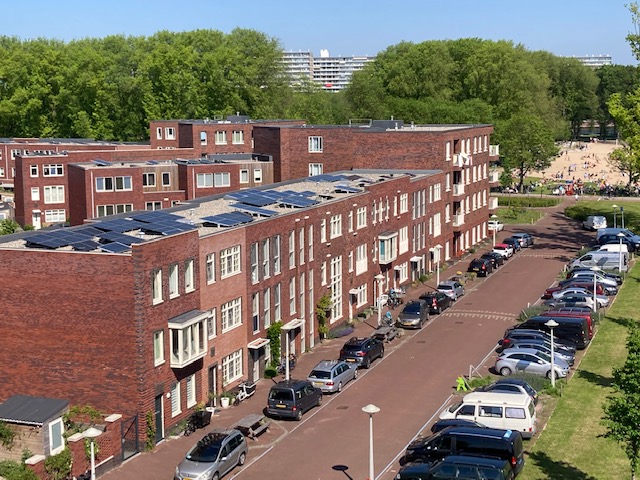Amsterdam tenants face more noise, pollution than home owners

Amsterdam tenants in privately-owned new homes fare worse than homeowners when it comes to their living environment, a new study from the University of Amsterdam (UvA) has shown.
Specifically, people living in private rental properties built after 2010 are faced with higher levels of nitrogen dioxide and more noise than their owner-occupied counterparts whose homes were built 10 years earlier, the researchers found.
“Rental houses are being built in noisier, more air-polluted places compared to the early 2000s, before the economic crisis,” says UvA’s Wouter van Gent, the chief researcher of the “Healthy Living in the Amsterdam Region” study.
“And we know why. Recent private rentals are being built in and around the city—Schiphol, the docklands, along the A10 ring road. They’re even called ‘Ring Zone developments.’”
More homes in general are currently being built in these already dense urban areas, but the researchers found that private rental units, in particular, score worse when it comes to the living environment than owner-occupied homes.
They are often near train tracks, harbours or industry, making them more exposed to air pollution, says Van Gent. “We’re talking about densification,” he says, “building in a city that is already built-up. There is a housing shortage and it is clear that owner-occupied housing is in better locations, although we can’t tie it to any recent shift in policy.”
The study
The two-year study, based on 2021 data, was meant to be policy-oriented, and was carried out by a team of geographers, city planners and medical researchers from the Amsterdam Institute for Social Science Research (AISSR), Amsterdam UMC hospital and the UvA. It was backed by the city council and regional health board.
The idea behind the research, says Van Gent, was to look at a possible “accumulation of inequalities” for people living in social housing.For example, his team expected new social housing was built in lesser quality areas over the past decade because of a shift towards more market-oriented development.
Was social housing, for example, being built in places where it acted as a sound barrier to the privately owned homes behind it?
“People who struggle economically live in social housing,” Van Gent says. “If these homes are built in the worst places, then there can be negative effects on their health. So, it’s not just economic inequities, but health ones. So, the question was: can we see this shift and relate it to health outcomes?”
Untangling the health effects of the study’s data is complicated and will take years, says Van Gent.
The study did find, though, that tenants, especially those in rent-controlled apartments, were prescribed more medicine for lung disease, heart and vascular diseases, neuropsychiatric disorders and sleep deprivation, indicating they have more health problems.
“But we can’t connect it to where people live,” says Van Gent. “That’s for future studies.”
Thank you for donating to DutchNews.nl.
We could not provide the Dutch News service, and keep it free of charge, without the generous support of our readers. Your donations allow us to report on issues you tell us matter, and provide you with a summary of the most important Dutch news each day.
Make a donation